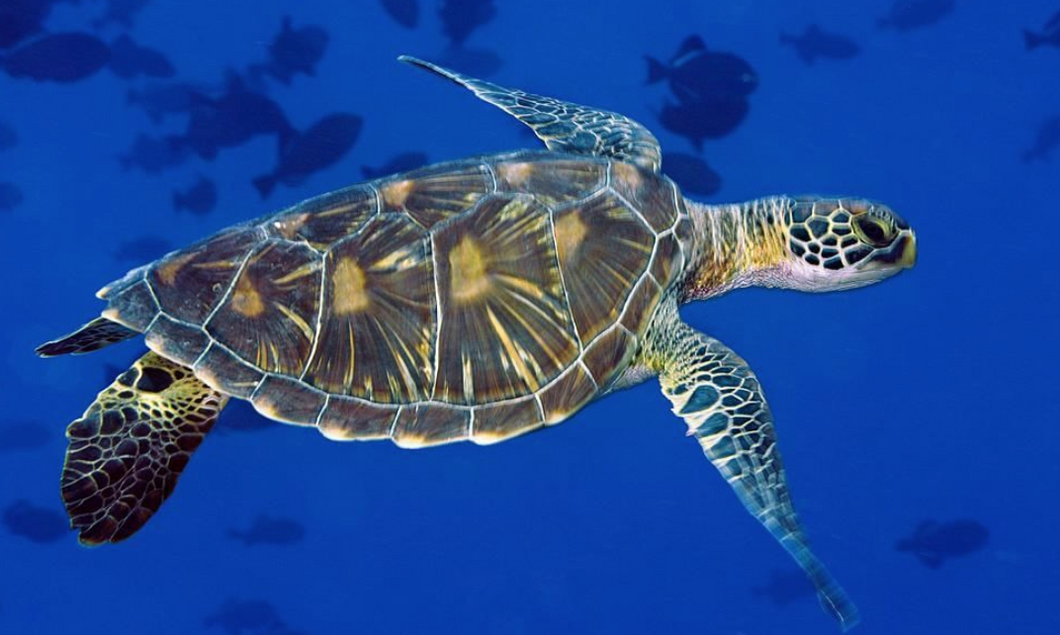Unless you're a Floridian, it's highly unlikely that you've heard about the state of emergency that is spreading across southwest Florida. On Tuesday, August 14, 2018, Florida Governor Rick Scott declared a state of emergency for seven counties that are home to beaches that line the Gulf of Mexico.
Want to know more? Whether you're the Floridian who avoids the news outlets for particular reasons, those that shall not be named, or an out-of-state inquirer who is questioning why Grandma said not to visit this summer, here's some info that'll help you to understand what exactly is going on down south in this crazy state.
1. What the hell is happening?
Each year, toxic algae grow hundreds of miles off of the coast of southwest Florida. These microscopic single-celled organisms, known as Karenia Brevis or K. Brevis, grow in what are known as algae blooms that are red in pigment and cause the water to turn brown, leading to the phenomenon's title, Red Tide. These algae can only grow in salt water and are nourished by the nutrients that come from common land fertilizers.
This year, the algae came to shore due to winds and currents in the Gulf of Mexico. Its toxicity increases as it reaches the coast. As waves break, the toxins to enter the airstream, increasing health risk for humans. Whether consuming as food or simply ingesting through breathing, marine life is severely affected by these toxic algae. Florida is enduring its tenth month with Red Tide killing the marine life and deteriorating the economy. The recently increased intensity of this outbreak has caused Gov. Rick Scott to declare a state of emergency.
2. Uh…what’s a state of emergency again?
A state of emergency is a period that is declared by government officials after a disaster that often suspends constitutional law and request funding for damages. Ranging from Tampa Bay to the tip of the Everglades, "Scott promised $1.5 million in emergency funding" (The Washington Post, 2018). These funds will contribute to clean-up, the tourism economy, and wildlife research and rescue. This state of emergency is established to prevent the potential collapse of an entire community.
3. Oh! It's that green slime goop from the lake!
You may have also seen another Florida body of water experiencing some unusual discoloration. Lake Okeechobee has become covered in what looks like Nickelodeon slime. Located in the center of the state near significant farmlands, Lake Okeechobee also experienced an influx of microscopic algae caused by nutrients found in fertilizers. The blue-green algae growing in this major lake is not the same as K. Brevis and it is not what caused Red Tide. As previously stated, the growth of red algae is a naturally occurring phenomenon. It is possible, however, that the run-off of Lake Okeechobee into the Gulf of Mexico has contributed to the growth and recent intensification of Red Tide.
4. Hold on – did you say that wildlife is in danger?

Yes…grab your Kleenex. Thousands of fish, hundreds of sea turtles and manatees, many dolphins, one whale shark, and now even birds have died from this toxic alga. The algae both suck up the oxygen from the water and get stuck in gills, making it impossible for fish to breathe. More marine life is dying from the ingestion of the algae. Manatees, for example, come to the surface to breathe, the area that is most densely populated by K. Brevis. What makes matters worse? Sea turtles are members of the endangered species list and manatees were just moved from endangered to threatened last year. Unfortunately, there is no way to stop these animals from suffering the effects of Red Tide.
5. I guess I may as well ask…how are the people?

Marine life is not the only thing that is crippled by Red Tide. The economies of the seven counties lining the currently affected coast of the Gulf of Mexico has plummeted. Tourism has reached level lows. From the declared state of emergency, "Florida's tourism agency will receive $500,000 to create an emergency grant program to help communities promote travel to the affected areas" (USA Today, 2018).
Additionally, residents are suffering from health issues. Breathing in the polluted air can cause tearing, burning, and itching of the eyes, nose, and throat. Ingesting contaminated shellfish can cause severe gastrointestinal issues. Many residents have chosen to leave town to avoid these health damages and any further consequences that may come of Red Tide.
6. Alright, I’m in! How can I help?

Unfortunately, there is not much that people can do to stop Red Tide. Since it is naturally occurring, the algae growth will occur each year. In its current state, however, as one of the most significant occurrences seen throughout history, 2018's Red Tide is continuing to spread and continuing to alarm scientists, experts, and locals of the affected areas.
While there are predictions that Lake Okeechobee water run-off has fueled the fire, no data is proving this predicted correlation. Regarding causation, global warming and last year's devastating hurricane season have also been considered in causing a particularly bad case of Red Tide this year. With global warming comes higher water temperatures, inviting algae and bacteria growth. The hurricane season could have also caused shifting wind patterns and adjusting tides. It is crucial to continue reducing, reusing, and recycling. Additionally, protect marine life by eliminating your use of plastic straws!
I think it's easy to tell, but, I've got to say, it's a pretty bad situation. My family and I have been fortunate to spend summers on the southwest coast of Florida for a total of thirty-five years. This year, however, was a completely different experience. Lacking tourism, out-of-business shops, and eye-tearing scenes of dead sea life – for more reasons than one! What strikes me most is how little there is that we can do. This year's Red Tide is perplexing scientists and confusing experts. All in all, no one is certain how long this will last and how harmful the ending effects will be.
Watch out, Miami! It might be coming for you!
- Devastating Red Tide Killing Sea Life in Southwest Florida - NBC 6 ... ›
- Florida algae crisis: Gov. Scott declares red tide state of emergency ... ›
- Strong, persistent red tide smothering Southwest Florida coast ›
- Nearly 300 Sea Turtles Dead as Red Tide Plagues Southwest Florida ›
- Worst Red Tide In More Than a Decade Leaves Droves of Animals ... ›
- Florida's Gulf Coast Battles Deadly And Smelly Red Tide : NPR ›
- Red tide in FL takes a growing toll, and not just on the fish | Miami ... ›
- Toxic red tide: Florida researchers investigate what's making it so ... ›
- Florida governor declares state of emergency to combat worst red ... ›
- Red Tide Is Devastating Florida's Sea Life. Are Humans to Blame? ›
- Red-tide algae: Florida declares a state of emergency as red tide ... ›






















